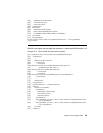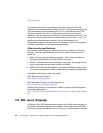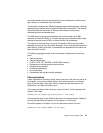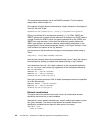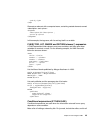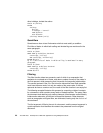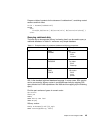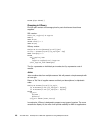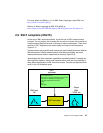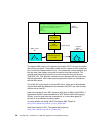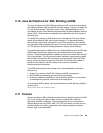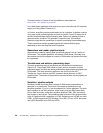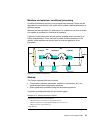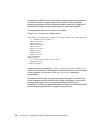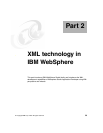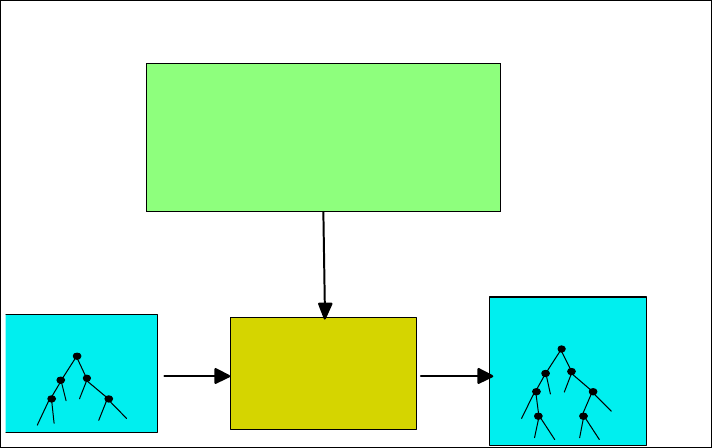
Chapter 2. Technologies in XML 47
For more detail, visit XQuery 1.0: An XML Query Language ( April 2002 ) at:
http://www.w3.org/TR/xquery/
XQuery: A Query Language for XML (Feb 2002) at:
http://www.w3.org/TR/2001/WD-xquery-20010215/#section-Introduction
2.9 XSLT compilers (XSLTC)
As the use of XML documents climbs, so will the use of XSL transformations
increase. For any project, this increase will not only be in terms of the number of
transformations required, but also in the size of each transformation. There are a
number of XSLT engines on the market today, but these are all interpreters
(Figure 2-1).
Transformations are generally static and can be used multiple times over different
XML documents. If these transformations could be pre-compiled, we would
realize performance levels in speed and for memory (Figure 2-2).
Java classes that offer translation capabilities are called translets. Translets can
offer significant speed in server-side transformations, and also the possibility of
client-side transformation of XML into other formats. Translets are expected to be
small, in the 100 Kilobytes range.
Figure 2-1 XSLT interpreters
XSLT processor
<xsl:template match="Customer">
<h1>Input XML Form</h1>
<form action="/Travel/CustomerXSLServlet" method="post">
<table border="0" cellpadding="2" cellspacing="0">
<xsl:apply-templates select="firstname"/>
</table>
</form>
</xsl:template>
XML input
file
Output
XML,
HTML, etc
XSLT
stylesheet



